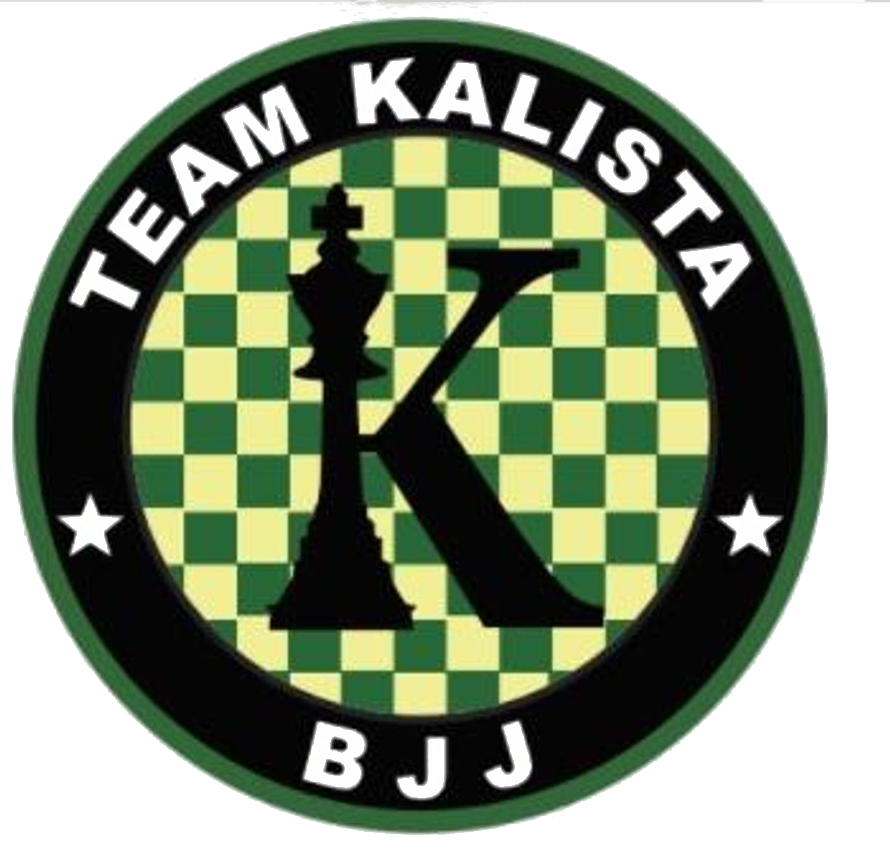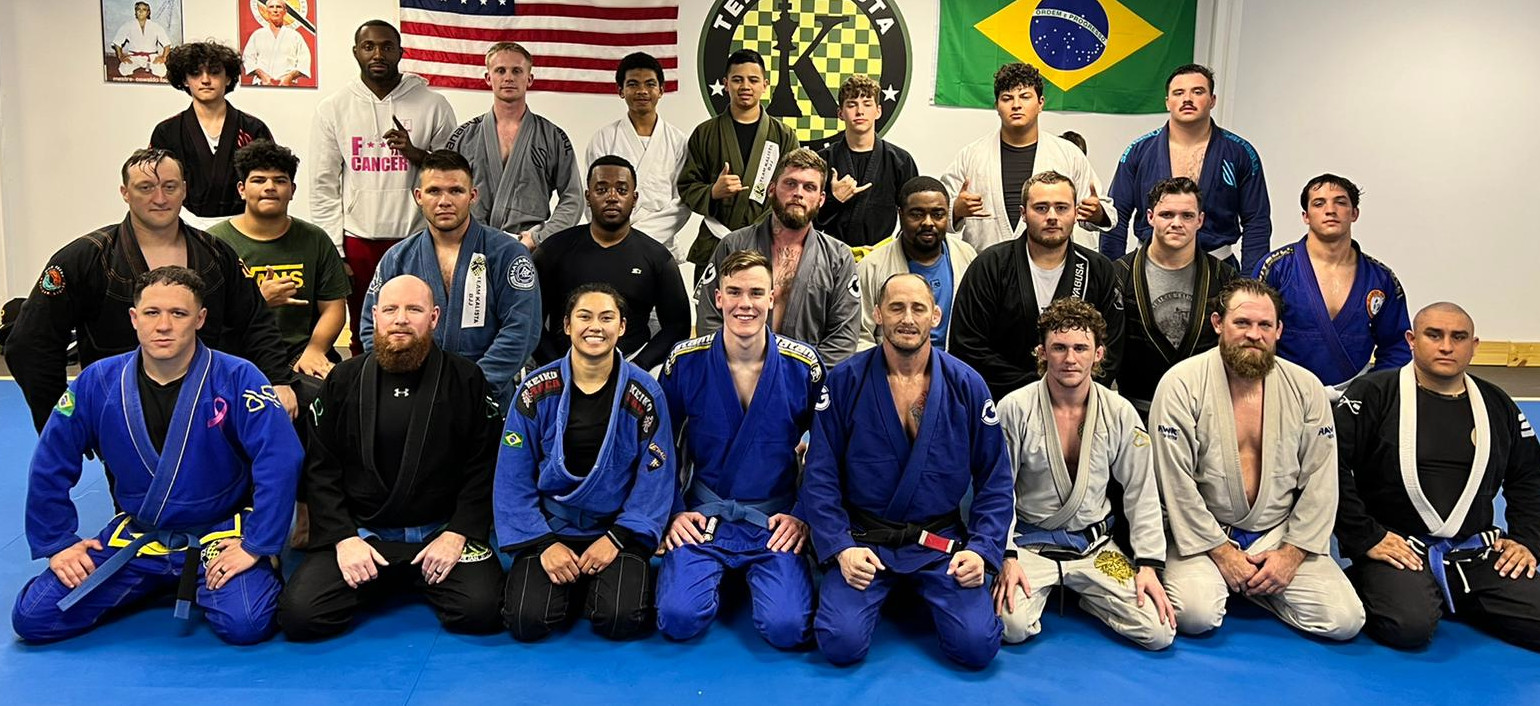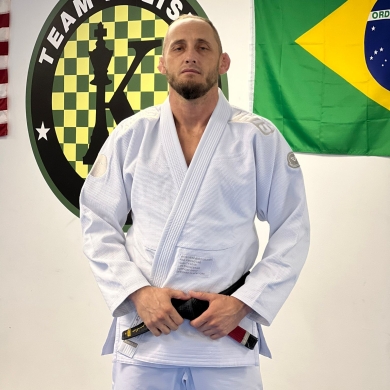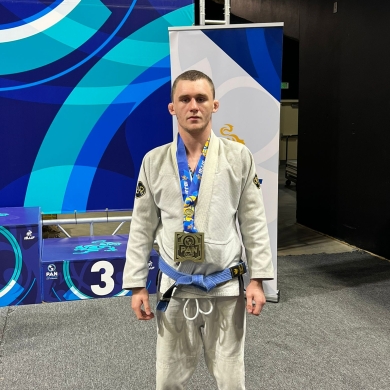GI CLASS
Brazilian jiu-jitsu basically consists of taking an opponent to the ground, by means of a takedown, sweep, mow or throw in order to establish a grappling fight, using different techniques, such as submissions, arm locks or legs or chokes, and submit. Therefore, the advantages that a larger standing opponent may have, such as greater reach, heavier weight, and more powerful attacks, are largely nullified when fighting on the ground.
Once the opponent is on the ground, a series of tactical movements or displacements are used with the help of inertia and weight redistribution to manipulate the opponent into a suitable position for the application of techniques. The basic position of this art is the guard, in which the user uses the legs to control the torso of the opponent face to face. Achieving a dominant position on the ground is one of the hallmarks of Brazilian jiu-jitsu, whether it be with lateral control, north-south control, mounted position, or back control. This system of movements, control and manipulation can be compared to kinetic or moving chess, and when a submission is achieved it can be compared to checkmate, since in a real situation there would be a disadvantage that would be difficult to overcome; examples of this would be a dislocated joint, loss of consciousness from fatigue or strangulation, or knockout from punches delivered from the dominant position (note that any type of punching is prohibited in Brazilian jiu-jitsu, but this rule has been lost from relationships). between art and vale tudo competitions in Brazil).
Jiu-jitsu has a variety of throwing and throwing techniques, to take the fight to the ground; although the simplest and fastest possible methods are favoured, this is often the least covered ground by modern schools. A basic move is known as a pulling guard, in which the user drags the opponent to the ground by grappling and dropping, thus initiating the guard stance.
fight on the ground
Andre Galvao executing a choke from the mounted position.
BJJ differs from other martial arts in its greater emphasis on ground fighting. In general, other martial arts and combat sports are based on punches, kicks, dodges and standing defenses. However, they do not train almost the facet of the fight on the ground; Usually in contact sports, if one of the contestants goes down, the referee stops and separates the contestants, starting the match again when both are standing. This has led all martial artists and wrestlers seeking greater efficiency to spend time learning and understanding ground fighting, or at least its fundamentals, based on BJJ, judo, catch wrestling or the sambo.
Today, it is known that mixed martial arts fighters who do not know anything about fighting on the ground do not prosper, since if they go to the ground, they fall at a terrible disadvantage, and possibly end up defeated.
Traditional methods of training in BJJ
The jiu-jitsu approach to fighting is the use of submissions (“submissions” in English) without using blows, this allows the fighters to practice at full speed and strength, as if it were a real situation and without hurting each other. , unlike other martial arts and combat sports in which you cannot practice with full speed and strength, due to the appearance of injuries. Training methods include learning by repetition of a technique with a partner, which offers no resistance initially, to give rise to resistance and the study and practice of variations of application and counterattacks. Physical conditioning is also an important part of the training of jiu-jitsu fighters, however it is based more on joint mobility, flexibility, general and specific aerobic resistance, and resistance to force than on physical conditioning. maximum strength or speed to hit.
Lorem ipsum dolor sit amet, consectetuer adipiscing elit, sed diam nonummy nibh euismod tincidunt ut laoreet dolore magna aliquam erat volutpat. Ut wisi enim ad minim veniam, quis nostrud exerci tation ullamcorper suscipit lobortis nisl ut aliquip ex ea commodo consequat. Duis autem vel eum iriure dolor in hendrerit in vulputate velit esse molestie consequat, vel illum dolore eu feugiat nulla facilisis at vero eros et accumsan et iusto odio dignissim qui blandit praesent luptatum zzril delenit augue.



